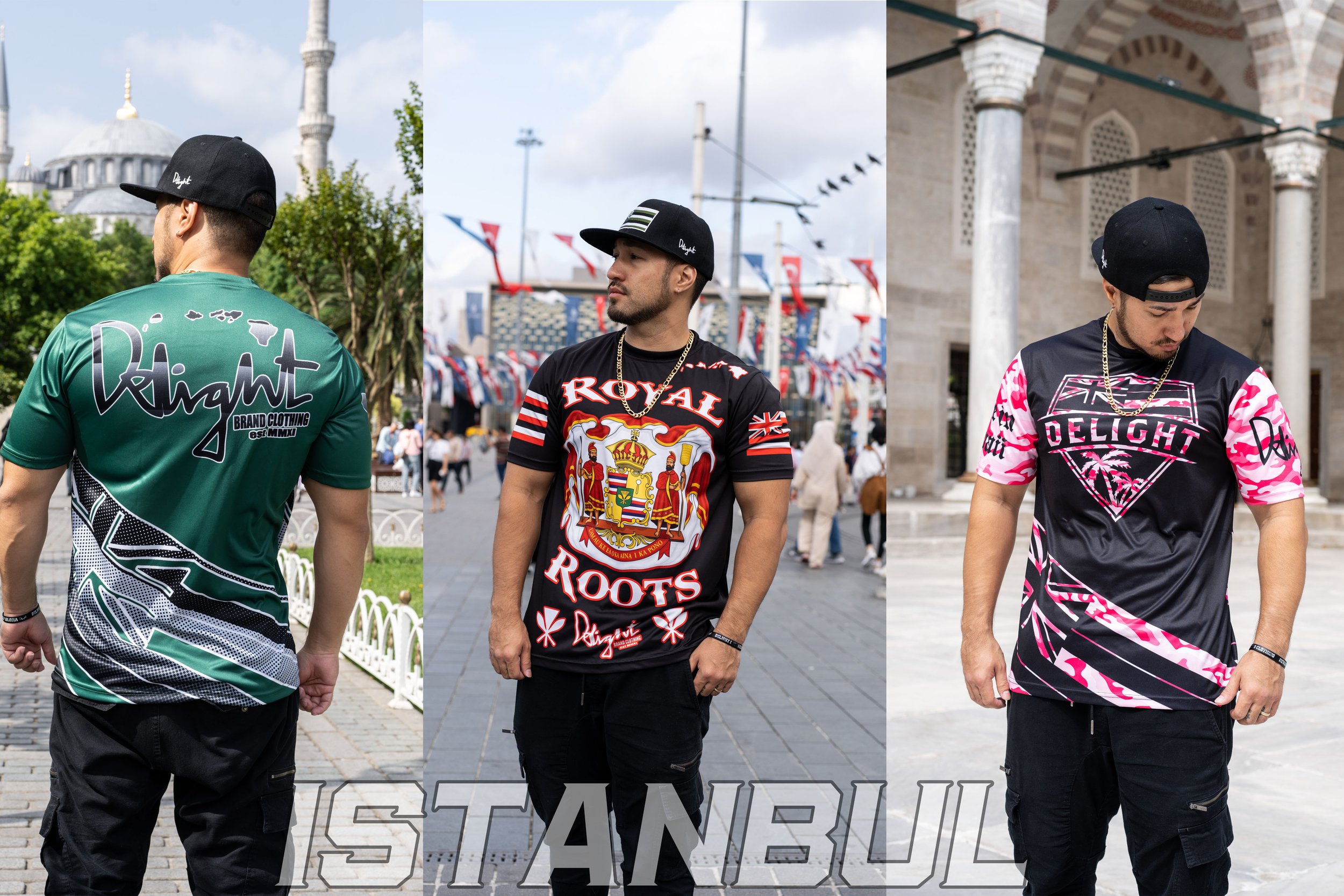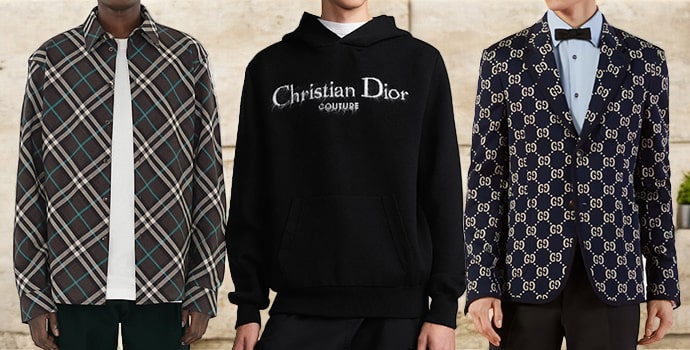The Value of Sustainable Clothing: How It Impacts the Setting and Your Wardrobe
Sustainable clothes is significantly identified for its important duty in decreasing the ecological influence of the fast apparel industry. By concentrating on eco-friendly materials and honest manufacturing methods, it attends to pressing environmental concerns. This change not just benefits the planet however additionally affects customer choices, causing a much more thoughtful technique to wardrobe management. Understanding these dynamics elevates essential questions concerning style's future and individual duty fit it.
The Environmental Impact of Rapid Fashion

Advantages of Sustainable Materials
Sustainable materials provide considerable advantages, especially through environment-friendly fabric options that minimize ecological harm. These materials additionally demonstrate resilience and durability, minimizing the requirement for regular replacements. Therefore, they contribute to a much more lasting apparel industry and promote liable customer behavior.
Eco-Friendly Material Options
While the fashion business has actually long been linked with quick trends and environmental injury, the surge of green material choices provides a transformative opportunity. Sustainable materials such as organic cotton, hemp, and Tencel have actually gained appeal due to their reduced eco-friendly impact. These fabrics are often generated without unsafe pesticides and call for much less water, lowering their carbon footprint - Branded Clothing. Additionally, lots of eco-friendly materials are naturally degradable, adding to a circular economic situation by minimizing waste. Selecting sustainable products not only sustains environmentally accountable methods however also advertises much healthier environments. As consumers come to be more familiar with their buying power, the demand for environmentally friendly fabrics motivates brand names to introduce and adopt even more sustainable production techniques, eventually benefiting the world and future generations
Durability and Durability Benefits
Lots of consumers are progressively acknowledging the toughness and longevity advantages of lasting products in their clothing selections. Unlike traditional fabrics, sustainable products such as organic cotton, hemp, and recycled polyester are engineered to endure wear and tear, causing garments that last much longer. This lowered frequency of substitute not only conserves consumers cash gradually yet also decreases waste produced by quick fashion. Additionally, sustainable apparel frequently employs green manufacturing approaches that boost fabric strength, adding to a reduction in the overall carbon footprint. By purchasing sturdy apparel, customers can grow a much more lasting wardrobe while delighting in high-grade items that preserve their visual and capability over time. Consequently, longevity and long life stand as key benefits of selecting sustainable products.
Minimizing Waste Via Lasting Practices
Minimizing waste in the apparel industry can be achieved with innovative techniques such as upcycling and repurposing materials. Additionally, embracing minimal wardrobe approaches motivates customers to focus on top quality over amount, ultimately lowering apparel consumption. Together, these strategies add greatly to a much more sustainable garments design.
Upcycling and Repurposing Materials
Upcycling and repurposing materials have arised as ingenious methods in the style market, transforming thrown out textiles right into important brand-new items. This approach not only lessens waste yet likewise urges creativity and uniqueness in clothes design. By taking old garments and products, designers can create special pieces that reflect personal design while minimizing the need for brand-new sources. In addition, upcycling frequently needs much less energy and water compared to standard manufacturing processes, substantially lowering the ecological impact of fashion. As customers become more knowledgeable about sustainability, the popularity of upcycled garments continues to increase, advertising a circular economy. Eventually, these techniques add to a much more sustainable future, where fashion prioritizes ecological health over quick manufacturing and consumption.

Minimal Wardrobe Techniques
As individuals significantly seek to reduce their environmental influence, adopting minimalist closet approaches has actually gained traction as a reliable approach to sustainable fashion. These strategies stress top quality over amount, encouraging customers to curate a smaller sized collection of functional, resilient clothing. By concentrating on ageless items that can be mixed and matched, people can lower the frequency of acquisitions and eventually lower waste.Additionally, minimalism promotes conscious consumption, advising buyers to review the moral and ecological effects of their options. This technique not only promotes a more lasting way of life however likewise streamlines everyday decision-making pertaining to clothing. As individuals welcome minimal principles, they add to a style society that values sustainability and liable consumerism, inevitably leading to an extra eco-conscious society.
The Function of Moral Labor in Sustainable Fashion
While several consumers are significantly familiar with the environmental repercussions of their garments selections, the relevance of moral labor methods in lasting style can not be overlooked. Moral labor includes reasonable salaries, secure working conditions, and respect for employees' civil liberties, developing the foundation of liable style manufacturing. Brand names that focus on moral labor not just uplift neighborhoods but likewise established a criterion for responsibility in the industry.Moreover, the assimilation of ethical techniques fosters transparency, enabling consumers to make educated selections concerning their purchases. This method contrasts greatly with fast style's unscrupulous labor models, which typically focus on profit over people. By sustaining companies devoted to ethical labor, customers add to a system that values human dignity along with ecological sustainability. Honest labor is not just an add-on; it is necessary to the wider mission of sustainable style, making sure that the pursuit for eco-friendliness does not come at the cost of human rights.
The Influence of Lasting Clothing on Carbon Emissions
Sustainable garments has the prospective to significantly lower carbon exhausts connected with the fashion business. Conventional garment production adds significantly to greenhouse gas emissions, primarily due to energy-intensive production procedures and the usage of non-renewable sources. On the other hand, lasting style concentrates on eco-friendly materials, such as natural cotton or recycled fibers, which usually need much less power to produce.Moreover, have a peek at these guys lasting brand names tend to take on much more effective production methods, lessening waste and reducing general exhausts. By focusing on resilience and classic design, sustainable garments urges consumers to purchase much less regularly, additional reducing the carbon footprint connected with overconsumption.Additionally, many sustainable brand names are devoted to transparency in their supply chains, allowing consumers to make enlightened selections that align with their worths. Ultimately, shifting towards sustainable clothing can cause a substantial reduction in carbon discharges, adding to a much healthier earth and a much more sustainable future for the fashion business.
Sustaining Neighborhood Economic Situations With Lasting Selections
The change toward lasting clothing not just addresses ecological worries but also considerably advantages local economic climates. By selecting lasting style, consumers frequently support regional craftsmens and tiny services, improving area durability. These business normally operate on a smaller range, focusing on workmanship and honest techniques over mass production.Investing in locally made lasting apparel cultivates job production and boosts economic development within areas. As customers become more knowledgeable about the ecological effect of their acquisitions, they increasingly seek out items that show their values. This need motivates regional producers to adopt lasting practices, adding to a circular economy.Moreover, supporting local companies decreases transport discharges, lining up with eco-conscious customer habits. The interconnectedness of lasting garments and neighborhood economic climates emphasizes the crucial function that private selections play in promoting both environmental and financial health. By promoting these regional links, neighborhoods can prosper while likewise working in the direction of a much more lasting future.
Changing Your Storage Room: Tips for a Sustainable Closet
As people look for to decrease their environmental impact, changing a storage room into a lasting wardrobe becomes an important step. One reliable approach is to assess existing apparel, keeping just products that are used routinely which line up with sustainability goals. Focusing on top quality over amount is crucial; spending in long lasting items from green brand names can considerably decrease waste.Additionally, integrating second-hand things can take a breath brand-new life into a wardrobe while reducing environmental damages. Organizing apparel swaps with pals or contributing extra products can further promote sustainability.When shopping, people should seek products that are organic, recycled, or biodegradable, and stay clear of quick style retailers - Branded Clothing. Practicing mindful intake by thoughtfully taking into consideration each purchase can add to pop over to this site an extra sustainable way of life. By executing these tips, one can develop a wardrobe that shows individual style while sustaining ecological stewardship
Frequently Asked Inquiries
Just How Can I Recognize Lasting Clothing Brands?
To determine lasting garments brand names, one must investigate products utilized, look for accreditations like her response Fair Trade, and analyze the brand's transparency regarding their production procedures, labor methods, and ecological influence, ensuring ethical and environment-friendly methods are prioritized.
What Are the Prices Related To Lasting Style?
The expenses connected with sustainable style can vary substantially. Greater production costs, moral sourcing, and eco-friendly materials frequently lead to boosted market prices, which may hinder some consumers while attracting eco conscious customers.
Can Sustainable Apparel Be Fashionable and trendy?
Lasting garments can undoubtedly be trendy and stylish. Designers significantly prioritize innovative materials and honest manufacturing approaches, proving that style and sustainability can exist side-by-side. Consumers now have varied alternatives that blend visual appeals with ecological awareness.
Just How Does Washing Clothing Affect Their Sustainability?
Cleaning clothes significantly influences sustainability by consuming water and power, adding to air pollution, and causing microplastic release. Frequent cleaning can deteriorate fabrics, shortening their lifespan and boosting the need for replacements, ultimately aggravating ecological problems.
What Is the Life-span of Lasting Clothes Compared to Quick Style?
The life-span of sustainable clothes commonly surpasses that of quick style things, usually lasting several years due to quality materials and workmanship. On the other hand, quick fashion garments may deteriorate quickly, requiring even more regular replacements. Lasting garments is increasingly identified for its crucial role in decreasing the environmental influence of the fast style industry. While lots of consumers are increasingly conscious of the environmental effects of their apparel selections, the value of ethical labor practices in sustainable fashion can not be neglected. Branded Clothing. Lasting garments has the potential to greatly decrease carbon exhausts linked with the style market. In contrast, sustainable style concentrates on green materials, such as natural cotton or recycled fibers, which typically call for less power to produce.Moreover, lasting brand names have a tendency to adopt much more reliable manufacturing techniques, lessening waste and decreasing total exhausts. By prioritizing toughness and timeless layout, sustainable apparel urges customers to get less often, further reducing the carbon impact connected with overconsumption.Additionally, several sustainable brands are dedicated to openness in their supply chains, enabling customers to make educated options that align with their worths